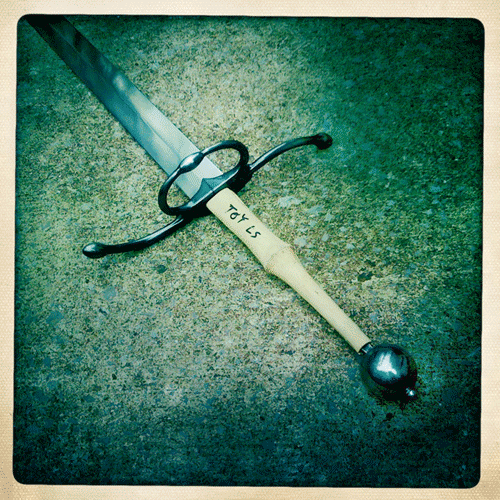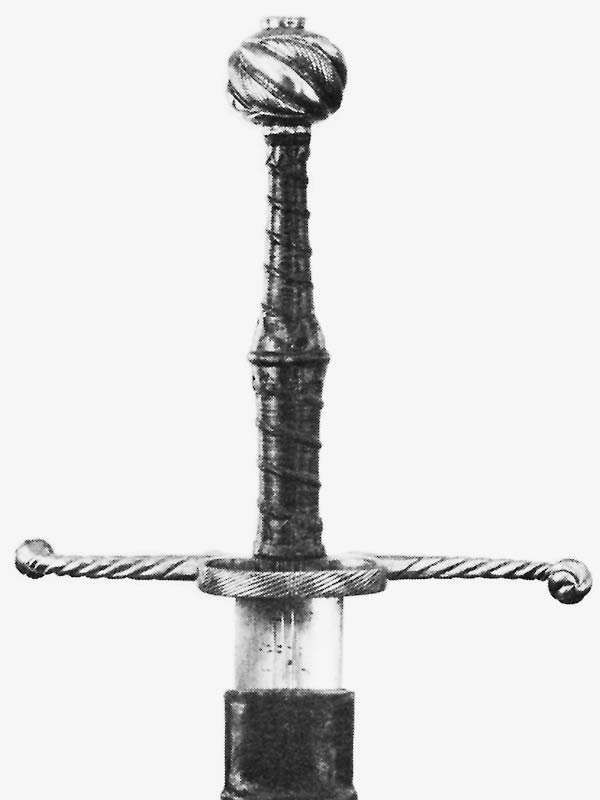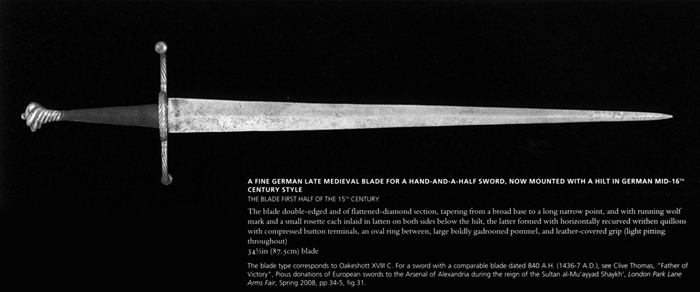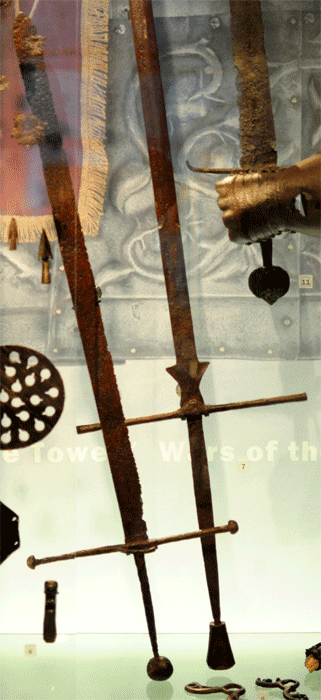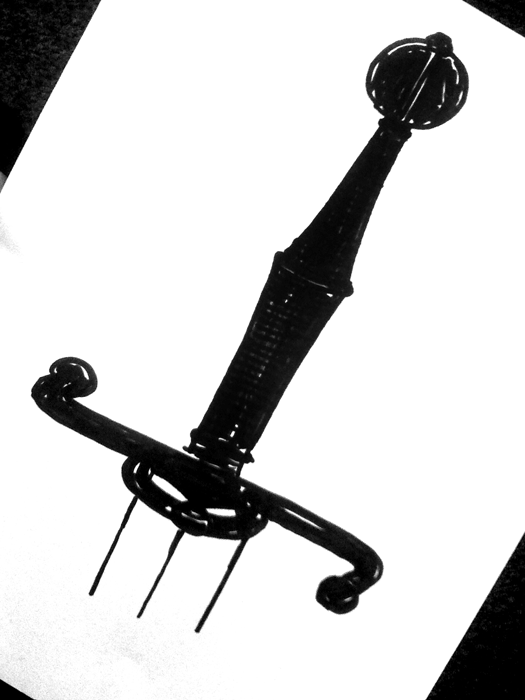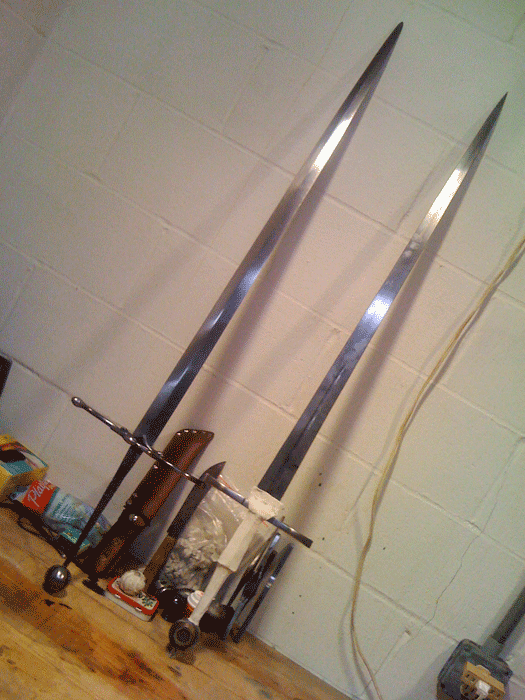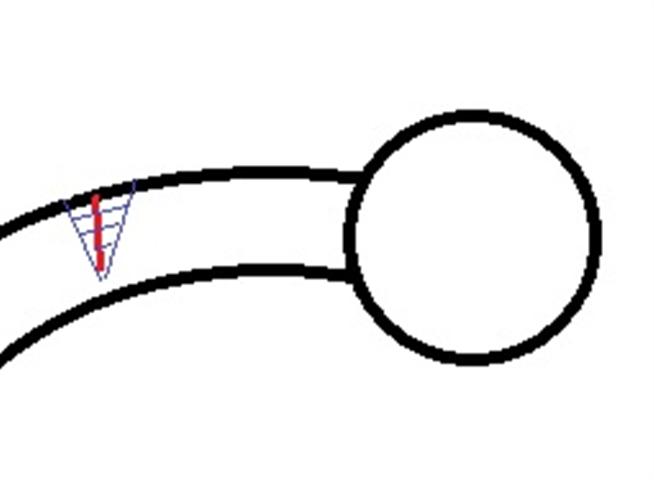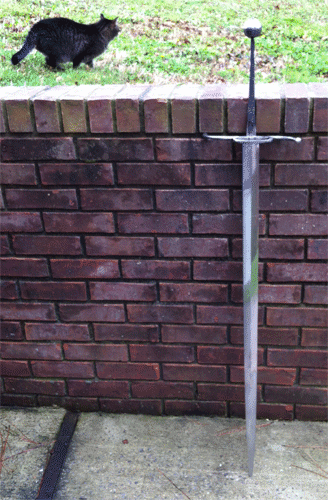I looked at this guard for a long time and found too much wrong with it to salvage it as that particular type of late 16th c. guard. I attacked it with a Dremel tool to remove everything but the side ring. Looking at it that way I decided it could be used to create a longsword in the German style of ca. 1520. Those typically have a pommel of Oakeshott style T, often writhen. I have art historical evidence for what Peter Johnsson has described as a peeled orange or clementine matched to this type of guard on a longsword. I also have art historical evidence for plain spherical pommels in this period. I'm not sure I've seen a plain spherical pommel on a longsword with this type of guard in this period. Diagonally-filed semi-spherical pommels like that on the A&A German Bastard Sword inspiration below also seem to have been common.
Just to prove the concept I put the rough-cut and otherwise untouched guard on an A&A Dürer blade and tossed in an Alchem pommel, which I correctly guessed would provide a reasonable counterweight. The grip is just a placeholder--the leftovers of an earlier Dürer project. I wouldn't use that type for this project. The result, without any other manipulation feels great and doesn't look half-bad.
So, I'm thinking that this project could work with:
• Refinement of the guard, include a stronger re-curve of the quillons, reshaping of the terminals (to spherical, maybe filed) and either a flattening of the inside of the side ring or at least a reshaping of that central swelling (again, to spherical, maybe filed). Bright or black finish would be fine for this sword. Typical of Windlass guards, it needs LOTS of material removed.
• Refinement of the pommel. I'd create a foot, which would give the pommel more of the clementine shape but not quite that pronounced. I'd like to try the peeled-orange facets but I'm a bit nervous about that. These pommels are about $13, though, so it's not as if I'm sunk if I screw it up. I'd create a decorative washer and nut for the top of the pommel.
• The blade is perfect as-is but I might have to take a small amount of the top to get the hilt proportions right. Not sure about that yet.
• Ignore the placeholder grip. The general shape is ok but I'll need something a bit more robust. My initial thinking is that these swords look great with all-black hilts and that was a common treatment in the period.
This might be my next project, depending on how quickly all of the pieces come together in my understanding. I wanted to just throw it out here as I ponder the possibilities. As always, I welcome critique, comments and suggestions. :D
